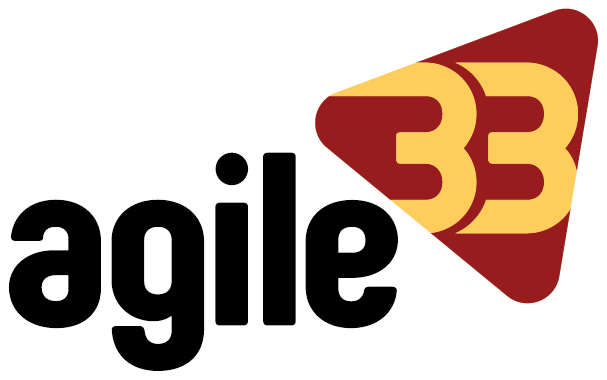
Scope creep is one of the most common challenges in project management. It quietly slips into projects, expanding the workload beyond what was originally agreed upon. While changes are sometimes necessary, unmanaged scope creep can lead to missed deadlines, budget overruns, and frustrated teams. The good news? Effective communication is one of the strongest tools you can use to keep scope creep in check.
This article
outlines how clear, consistent, and proactive communication can help prevent
scope creep before it derails your project.
What Is
Scope Creep?
Scope creep
refers to the gradual expansion of a project’s objectives, deliverables, or
features without corresponding adjustments to time, budget, or resources. It
often starts with small, seemingly harmless changes—like adding an extra report
or tweaking a feature—which, over time, accumulate into a significant workload
increase.
While changes
are a natural part of any project, problems arise when they aren’t managed
properly. That’s where communication comes in.
Why
Communication Is the Key to Preventing Scope Creep
Miscommunication—or
a lack of communication—is often at the root of scope creep. Team members may
misunderstand project goals, stakeholders might assume additional tasks are
included, or critical details can get lost in fast-paced environments.
By establishing
clear communication channels, setting expectations early, and maintaining
transparency throughout the project, you can significantly reduce the risk of
scope creep.
How to Use
Communication to Prevent Scope Creep
1. Set Clear
Expectations from the Start
The foundation
for controlling scope creep begins in the project initiation phase. Clearly
define the project’s scope, objectives, deliverables, timelines, and boundaries
in your project charter or scope statement.
Key
Communication Tactics:
·
Document Everything: Create detailed project
documentation outlining what is included—and just as importantly—what is not.
·
Clarify Roles and Responsibilities: Make sure
every stakeholder understands their role in the project to avoid assumptions
that lead to extra work.
·
Hold a Kickoff Meeting: Use this meeting to
align everyone on the project goals and expectations, addressing any questions
or concerns upfront.
2. Establish
Strong Change Management Processes
Scope changes
aren’t inherently bad, but they need to be managed carefully. Implementing a
formal change management process helps prevent informal requests from slipping
through unnoticed.
Key
Communication Tactics:
·
Create a Change Request System: All scope
changes should go through a documented process where they are reviewed,
assessed for impact, and formally approved or rejected.
·
Communicate the Process: Ensure all stakeholders
know how to submit change requests and understand the implications of adding
new work.
·
Be Transparent About Impacts: Clearly explain
how changes will affect timelines, costs, and resources before any decisions
are made.
3. Maintain
Regular, Transparent Updates
Frequent
communication keeps everyone aligned and reduces the likelihood of
misunderstandings. Regular updates help identify potential scope issues early
before they escalate.
Key
Communication Tactics:
·
Hold Consistent Meetings: Weekly status
meetings, stand-ups, or sprint reviews create space to discuss progress, risks,
and potential changes.
·
Use Visual Tools: Project dashboards, timelines,
or Kanban boards can visually communicate the current scope and progress,
making it easier to spot discrepancies.
·
Encourage Open Dialogue: Foster an environment
where team members feel comfortable raising concerns if they notice tasks
creeping beyond the agreed scope.
4. Manage
Stakeholder Expectations Proactively
Stakeholders
often request additional features or changes without realizing the impact on
project scope. Building strong relationships and maintaining proactive
communication helps manage these expectations effectively.
Key
Communication Tactics:
·
Engage Stakeholders Early and Often: Regular
check-ins ensure stakeholders stay informed about progress and limitations.
·
Reinforce Scope Boundaries: Don’t hesitate to
remind stakeholders of the original scope when new requests arise. Frame these
conversations around project goals, timelines, and resource constraints.
·
Negotiate Smartly: If a change is necessary,
work with stakeholders to prioritize it against existing deliverables. This can
involve trade-offs, such as extending deadlines or reallocating resources.
5. Address
Scope Creep Immediately
If you notice
signs of scope creep, address them right away. Ignoring small changes can lead
to larger issues down the line.
Key
Communication Tactics:
·
Speak Up Early: If new tasks or features are
introduced without formal approval, raise the issue immediately with relevant
stakeholders.
·
Use Data to Support Your Case: Reference the
original project scope, timelines, and resource plans to highlight the impact
of the additional work.
·
Stay Solutions-Oriented: Instead of focusing on
the problem, offer solutions—whether it’s adjusting the project plan,
reallocating resources, or deferring changes to a later phase.
Common
Communication Pitfalls That Lead to Scope Creep
Avoid these
mistakes to keep your projects on track:
·
Vague Scope Descriptions: Ambiguity in project
documentation leads to different interpretations of what’s included.
·
Infrequent Check-Ins: Long gaps between project
updates allow scope changes to go unnoticed.
·
Failure to Document Changes: Verbal agreements
can cause confusion. Always document scope changes formally.
·
Assuming Everyone Is on the Same Page: Never
assume—always verify that stakeholders and team members understand the scope
and any changes.
Preventing
scope creep isn’t about saying “no” to every new request—it’s about having the
right communication strategies in place to manage changes effectively. By
setting clear expectations, maintaining open lines of communication, and
addressing scope changes proactively, you can keep your projects on track and
deliver successful outcomes.
Effective
communication isn’t just a project management skill—it’s the glue that holds
project scope, timelines, and deliverables together. When done right, it
minimizes surprises, reduces risks, and creates a more collaborative
environment where projects thrive.
